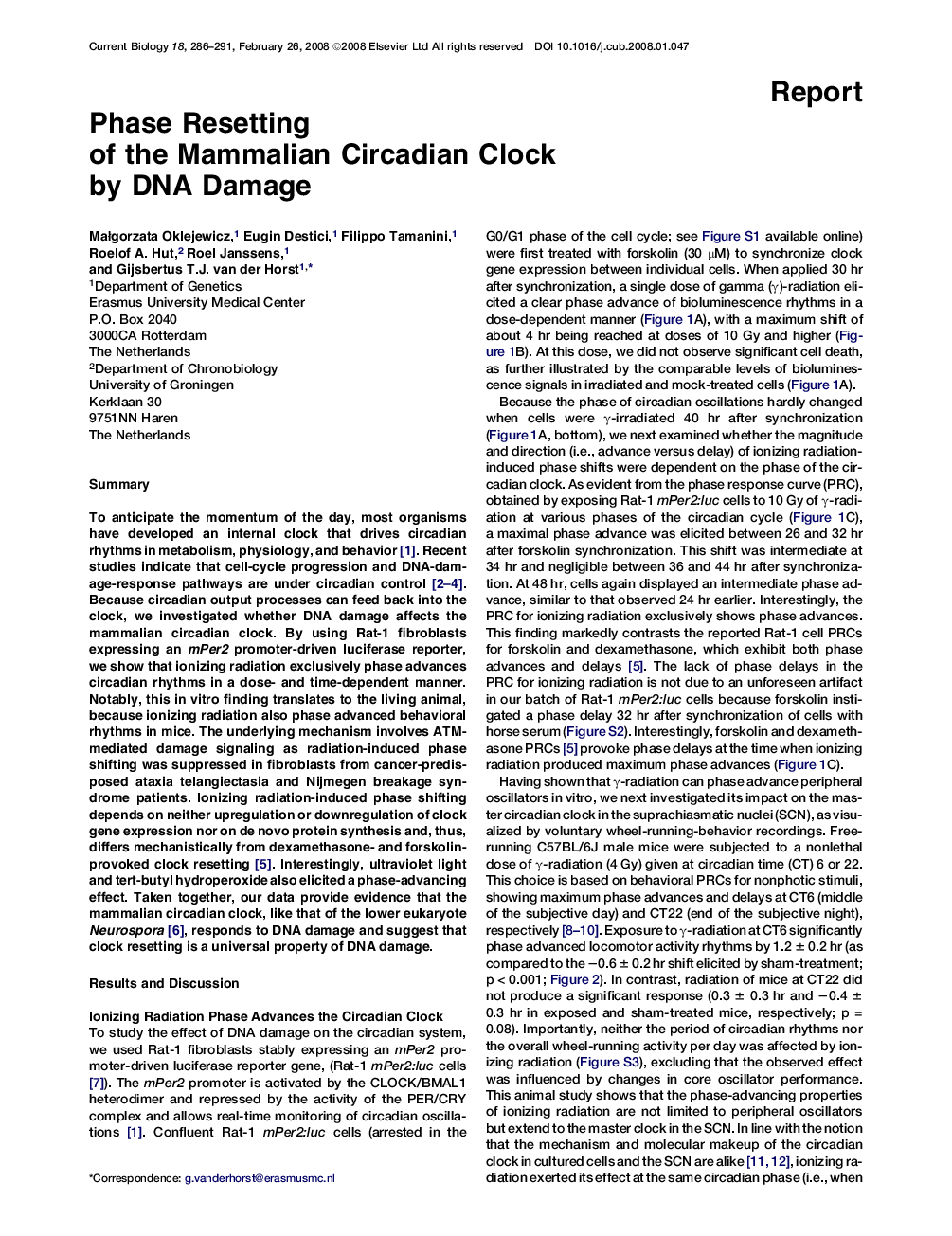| Article ID | Journal | Published Year | Pages | File Type |
|---|---|---|---|---|
| 2044032 | Current Biology | 2008 | 6 Pages |
SummaryTo anticipate the momentum of the day, most organisms have developed an internal clock that drives circadian rhythms in metabolism, physiology, and behavior [1]. Recent studies indicate that cell-cycle progression and DNA-damage-response pathways are under circadian control 2, 3 and 4. Because circadian output processes can feed back into the clock, we investigated whether DNA damage affects the mammalian circadian clock. By using Rat-1 fibroblasts expressing an mPer2 promoter-driven luciferase reporter, we show that ionizing radiation exclusively phase advances circadian rhythms in a dose- and time-dependent manner. Notably, this in vitro finding translates to the living animal, because ionizing radiation also phase advanced behavioral rhythms in mice. The underlying mechanism involves ATM-mediated damage signaling as radiation-induced phase shifting was suppressed in fibroblasts from cancer-predisposed ataxia telangiectasia and Nijmegen breakage syndrome patients. Ionizing radiation-induced phase shifting depends on neither upregulation or downregulation of clock gene expression nor on de novo protein synthesis and, thus, differs mechanistically from dexamethasone- and forskolin-provoked clock resetting [5]. Interestingly, ultraviolet light and tert-butyl hydroperoxide also elicited a phase-advancing effect. Taken together, our data provide evidence that the mammalian circadian clock, like that of the lower eukaryote Neurospora [6], responds to DNA damage and suggest that clock resetting is a universal property of DNA damage.
